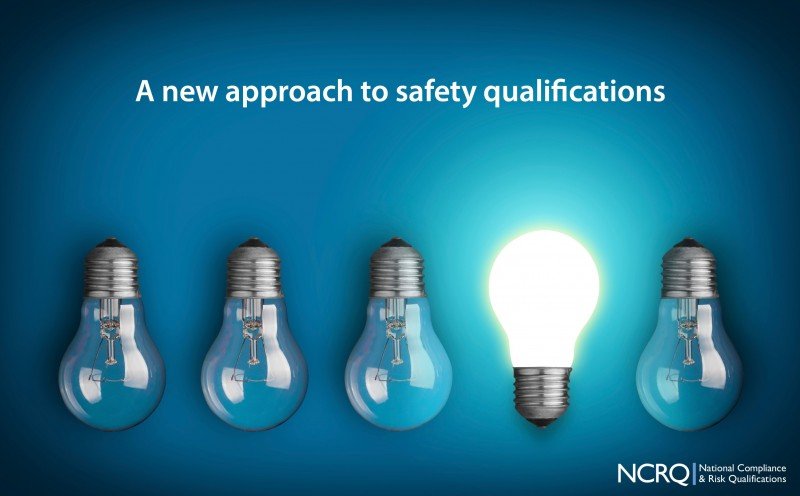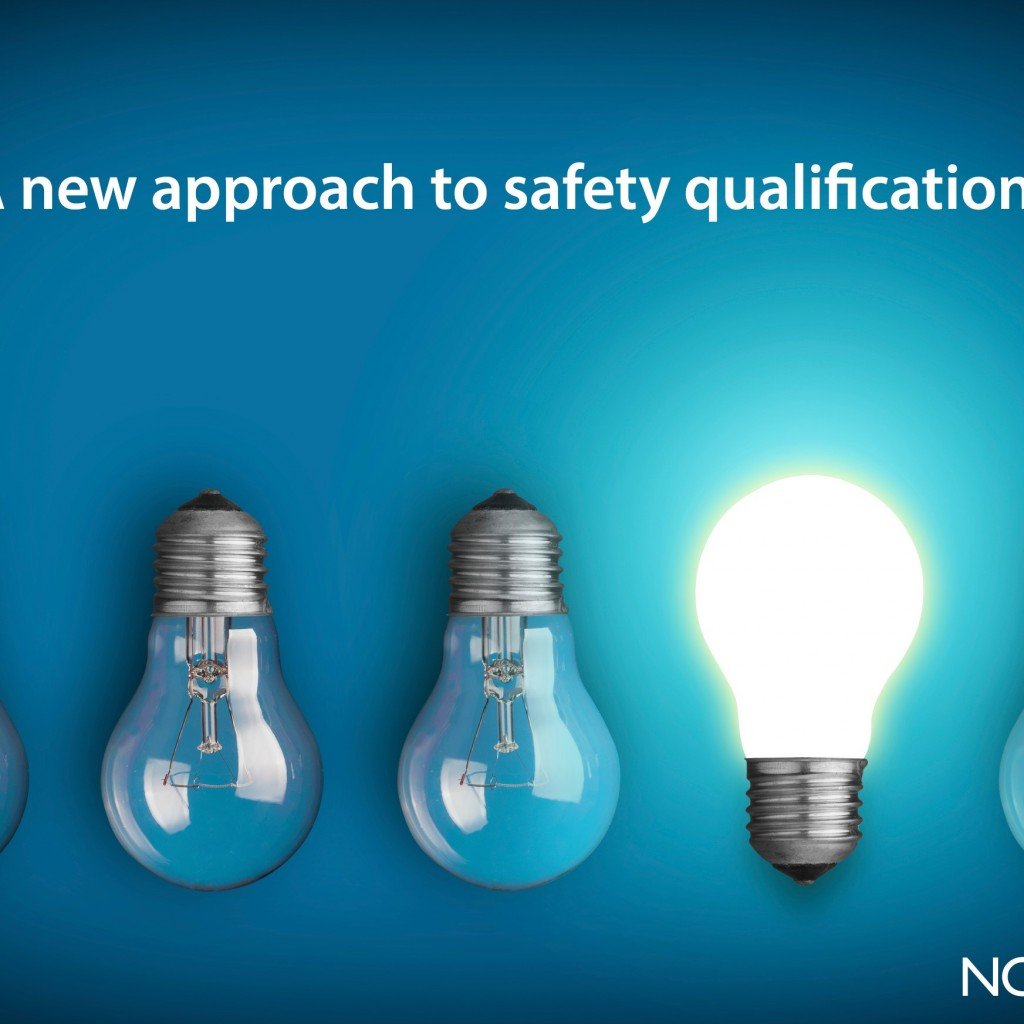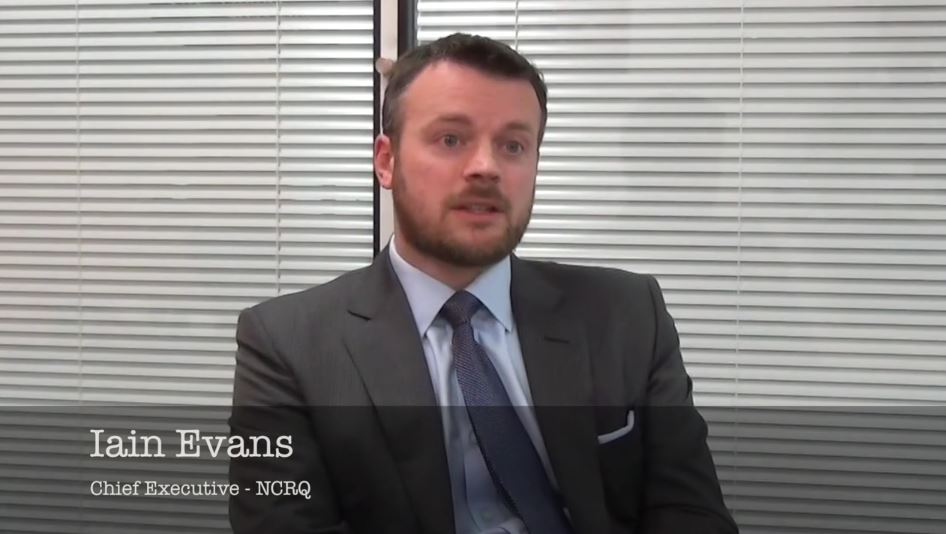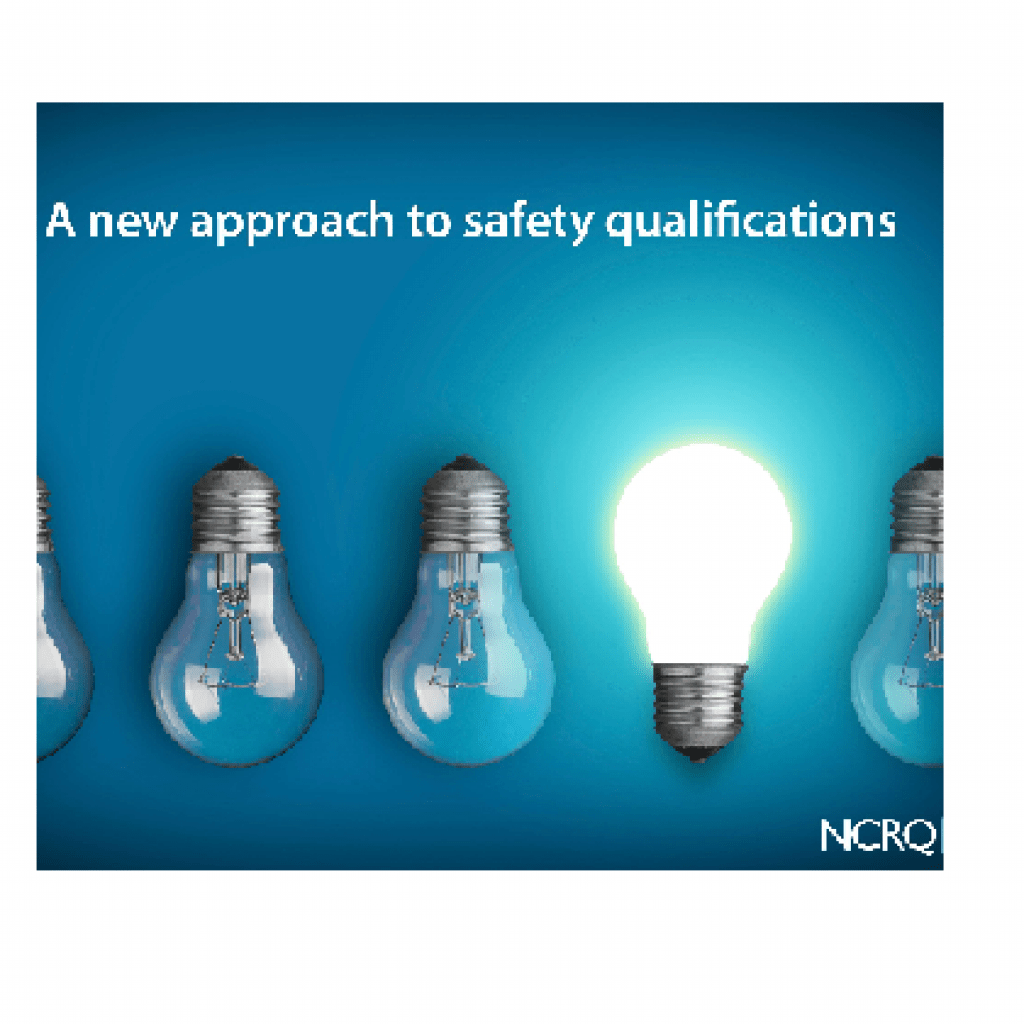Chris Smith, Senior Tutor with NCRQ, explains everything you need to know about the National Compliance and Risk Qualifications, including what they are, how they’re valued and how you complete the qualification.
What do NCRQ do?
National Compliance and Risk Qualifications (NCRQ) are qualifications designed to improve the competence of health and safety practitioners. The NCRQ suite of qualifications was set up to provide competency-based qualifications that reflect the knowledge, understanding and skills required by health and safety professionals in the real world.
Since they were established they have been proving popular as an alternative to the traditional examination-based qualifications, as they give learners the skills and abilities to be able to manage health and safety in a workplace, rather than just talk about it.
There is also a focus on softer skills, such as being able to justify decisions to senior management, deal with conflict, and practical advice on how to implement change management and improve attitudes to health and safety.
Who are NCRQ?
The qualifications themselves have been developed by a number of leading experts in health and safety, including representatives of some of the UK’s largest employers, specialists from the Health and Safety Executive (HSE), legal experts, and academics.
All the tutors are former HSE senior inspectors or director-level safety managers from large companies, with support available for students seven days a week. A student support forum is also available, which offers advice and support.
The former Chief Executive of the Health and Safety Executive, Geoffrey Podger CB, is the driving force behind the qualifications: “NCRQ meets the criticism that I often heard when at HSE that many of those with occupational health and safety qualifications did not understand the subject in real life”, he has said. “NCRQ reflects the reality of health and safety – acquiring a good practical knowledge not obsessing about theory.”
Iain Evans is Chief Executive of NCRQ.
NCRQ qualifications
Certificate in Applied Health and Safety
This certificate is suitable for students have no safety knowledge or experience and want a good foundation in safety management or are working in a safety-related role and want to improve your knowledge and skills.
It also focuses on the softer skills, such as being able to justify your decisions to senior management, deal with conflict, and practical advice on how to implement change management and improve attitudes to health and safety.
By the end of the course, you will be able to supervise or manage a workforce in a safe way, undertake risk assessments and develop sensible and proportionate control measures. And carry out investigations into workplace accidents or ill-health.
Certificate in Personal Injury Liability
This certificate is suitable for those who have little or no knowledge or experience in dealing with or reducing sickness absence and personal injury claims, and want a good foundation in this area or are already an experienced safety practitioner wanting to improve your skills and knowledge in this area.
The course will help students understand the risks and control measures associated with the biggest causes of lost time and civil claims: work-related stress, manual handling, slips and trips and asbestos.
By the end of the course, you will also be able to develop and implement strategies and procedures to reduce sickness absence and lost time and know how to apply sensible risk control measures that allow activities to take place in a safe manner, without unnecessary bureaucracy.
Level 6 Certificate in Personal Injury Liability – unit HSD 2
High rates of sickness absence and personal injury claims, and the significant associated costs, are one of the leading drivers for employees to improve their health safety management systems – and yet existing safety qualifications do not examine this important area in any detail.
Following demand from employers, this unit has been developed as a separate qualification and integrated as a significant part of the Diploma in Applied Health and Safety. This unit will help learners:
- Understand the risks and control measures associated with the biggest causes of lost time and civil claims: work-related stress, manual handling, slips and trips and asbestos
- Be able to develop and implement strategies and procedures to reduce sickness absence and lost time
- Know how to apply sensible risk control measures that allow activities to take place in a safe manner, without unnecessary bureaucracy
- Recognise how an employer may be liable in tort for personal injury claims
- Appreciate the often significant differences between keeping people safe and compliance with statutory duties, and recording and retaining the evidence to be able to successfully defend a civil claim
- Be able to advise an employer of appropriate steps to reduce both the number of civil claims and their associated costs, both generally and in relation to specific risks.
Diploma in Applied Health and Safety
This diploma aims to give students the knowledge and skills to be able to supervise or manage a workforce in a safe way, undertake risk assessments and develop sensible and proportionate control measures and carry out investigations into workplace accidents or ill-health.
By the end of the course, students will be able to:
- Confidently manage employees undertaking higher risk activities
- Have the skills to advise an employer as a competent person or register as a health and safety consultant
- Be able to undertake a safety management role in an organisation dealing with complex or higher risk activities
- Have a comprehensive understanding of a wide range of risks to safety and occupational health in the workplace
- Be able to develop and implement strategies to reduce the costs and consequences of personal injury claims to an employer.
Level 6 Certificate in Applied Health and Safety – unit HSD 1
This Certificate focuses on the principals of health and safety management, and enables learners to:
- Supervise or manage a workforce in a safe way
- Undertake risk assessments and develop sensible and proportionate control measures
- Carry out investigations into workplace accidents or ill-health
- Establish and develop a safety management system for any size of organisation
- Understand and improve behaviours and attitudes that foster a positive safety culture
- Manage health and safety in a low risk environment.
It is suitable for existing safety practitioners but also designed for those with no previous health and safety qualifications or experience.
NCRQ accreditation and structure
All of the qualifications are aligned with the RQF (formally QCF) – the Regulated Qualifications Framework, and are accredited by the qualifications and examinations regulator Ofqual. This gives confidence to students and employers that our qualifications are delivered by an organisation whose integrity, resources and competence have been independently checked. It ensures that qualifications are monitored and are of the appropriate standard and level they claim, and increases recognition across the UK and Europe.
The structure of NCRQ qualifications allows learners to work progressively through the suite of qualifications, each one contributing towards the full Diploma in Applied Health and Safety.All of the NCRQ qualifications – including the Certificate in Applied Health and Safety – are at Regulated Quality Framework Level 6 – an equivalent academic level to the final year of a degree.
This is because NCRQ believes that a lower level qualification does not give sufficient depth of understanding for learners to be able to take on the critical responsibility of providing health and safety advice to an organisation.
Learning style
NCRQ qualifications are taught through self-directed study, using a problem-based approach to learning. The qualifications are not delivered in a modular format, where for example law, safety management systems or risk controls are taught as separate units.
Students with NCRQ work through a series of real life case studies, critically analysing each scenario and looking at the root cause. This introduces and progressively builds upon knowledge and understanding across the whole spectrum of topics in each example.
Students work through a workbook for each unit, which is supported by a range of online activities and materials. NCRQ uses an innovative enhanced discovery method of teaching and learning, whereby students are not initially told what they need to know, but find it out for themselves through their own critical analysis and research.
This significantly increases the understanding and retention of the information and concepts, and gives students the ability and confidence to undertake their own self-directed research and to develop strategies to deal with novel scenarios where there is little guidance or benchmarks.
Individuals can progress at a pace to suit themselves, and work around their work and family life. Because there are no exams, there are no fixed timetables – assignments can be requested at any time. Whilst students have three years to complete the full Diploma, on average it takes about nine to 12 months to complete.
What support is given?
All students are allocated a specific tutor to guide them through their studies. All NCRQ tutors are either former HSE inspectors or former director-level safety practitioners, ensuring that students are advised and supported by those with a wealth of real world experience.
Student support is available seven days per week, and until 8pm on weekdays, reflecting the times when students study.
Additionally, there are online student support forums for each unit, allowing students to help each other, share ideas, and network, as well as engaging with their tutor.
How is the NCRQ qualification assessed?
In the real world, health and safety professionals are not required to recite large volumes of information or make decisions on risk management on the spot.
They are of course required to have a comprehensive knowledge and understanding of the principles of health and safety management, which they could apply to any situation to ensure immediate safety.
However in real life, professionals are required to undertake thorough research on risk controls, to undertake a critical analysis on existing risk control systems, and to develop systems, policies and procedures to ensure that risks to health and safety remain well controlled.
Because of this, NCRQ assessment takes the form of a range of assignments which present the student with a detailed scenario and supporting information together with a range of tasks to undertake. These are designed to emulate real life as closely as possible. Assessments are requested by the student whenever convenient for them, and they will then have a period of time (ranging from two to six weeks, depending on the task) to complete the assignment in their own time.
This method of assessment requires students to spend several hours on the analysis, research and development of outcomes, demonstrating a depth of intellectual ability that cannot be tested in a 30 minute exam question.
In order to pass the qualifications, a student must demonstrate that they are fully competent in every assessment criteria, and so excellence in one area cannot substitute for poor performance in another.
This provides assurance to employers that the holder of an NCRQ qualification is truly competent to advise or manage heath and safety in their workplace.
Assessments are marked based on the demonstration of competence for each assessment criteria, rather than the candidate’s ability to answer exam style questions. This reflects the fact that there is often not one ‘correct’ answer; that real life is not black and white. It acknowledges that practitioners need to speak the language of an organisation, and need to integrate with other business processes.
Assessments include:
- Undertake a risk assessment and justify decisions
- Prepare an accident investigation report with a root cause analysis, safety culture analysis, application of legal duties and development of an action plan
- Reply to a number of requests for advice as a consultant
- Complete a professional development plan
- Undertake an analysis of an accident and advise an employer on liability and exposure from a civil claims perspective, applying the terms of an insurance policy and recommending financial reserves
- Preparing a presentation and script to a board to persuade them to implement a project, including calculating the costs of absence and developing a business case
- Development of policy and procedures to reduce risks, achieve compliance, and reduce exposure to civil claims
- Participate in an online professional discussion on topical matters of public safety
- A comprehensive research, analysis and risk assessment report, together with development of practical guidance for health and safety management.
Validation interview
After all of the assessments have been completed, students then undertake a short validation interview over a webcam or smartphone.
This allows the identification of the student to be verified, and the student to be questioned and challenged about their assessments, ensuring that the work is their own, in a similar way to universities undertaking a viva voce with their PhD students.
Recognition
The NCRQ Certificate in Applied Health and Safety meets the academic requirements for Tech IOSH membership, and the NCRQ Diploma for Graduate IOSH membership.
After completion, candidates can then apply for Chartered IOSH membership in the same way as those completing NEBOSH or university degree qualifications.
For more information visit the NCRQ website.
Chris is a tutor with NCRQ, providing regulatory and real-world experience to students from nearly 20 years’ experience as HM Inspector of Health and Safety.
How NCRQ qualifications works to evaluate candidate competencies
Iain Evans, CEO of NCRQ, explains how the new NCRQ qualification works to evaluate candidates based on their competencies.
How many times has your e mployer asked you to recite health and safety regulations or best practice on the spot? How many times have you been asked to analyse a workplace accident and produce a report in half an hour, whilst locked in a room with no access to the internet or books? Never?
mployer asked you to recite health and safety regulations or best practice on the spot? How many times have you been asked to analyse a workplace accident and produce a report in half an hour, whilst locked in a room with no access to the internet or books? Never?
Employers want safety practitioners who can ‘do’ health and safety. People who can be an integral part of their organisation. People who can keep the workforce safe and healthy, but who can also add value. Most employers want someone who can:
- Reduce civil claims;
- Reduce accidents;
- Reduce ill health; and
- Reduce lost time.
Experience will always be a key requirement when applying for jobs, but health and safety practitioners need to be able to learn these skills from somewhere.
Traditionally, there have been two routes into health and safety: exam-based qualifications and evidence-based National Vocational Qualifications (NVQ). A new competence-based qualification has been developed by some of the UK’s largest employers – BBC, Royal Mail, and Siemens, as well as representatives from HSE, academics, and leading barristers.
The NCRQ Level 6 Certificate and Diploma in Applied Health and Safety ensure that candidates have the knowledge and skills that are required in the workplace. The NCRQ assesses the learner through assignments, which are completed in the students own time, with access to online resources so they can undertake research for solutions to problems and apply them to scenarios.
Leaners are taught using problem-based learning – analysing real case studies so they can see the concepts applied in practice, with increasing complexity throughout the course. They are taught to teach themselves facilitating a much better understanding and retention of knowledge and skills than simply reading material. Both the NCRQ Certificate and NCRQ Diploma are at QCF Level 6 – ensuring that concepts are understood in depth from the outset. It also means that completion of the NCRQ Certificate counts towards the full NCRQ Diploma. The qualifications are recognised and fully supported by many employers, and the largest health and safety recruitment agencies are actively promoting the qualifications.
The NCRQ Level 6 Certificate in Applied Health and Safety is accredited for Technical IOSH Membership, and the NCRQ Level 6 Diploma in Applied Health and Safety for Graduate IOSH Membership. Both are delivered exclusively by NCRQ.
Iain worked as HM Inspector of health and safety for many years across a variety of industries, including engineering, manufacturing, and services, before working in HSE’s Hazardous Installations Directorate – examining safety cases for major hazard chemical sites. He later worked as the Head of Legal and Enforcement at HSE, responsible for the training and development of inspectors across the UK, writing HSE’s internal enforcement guidance, and advising Principal Inspectors on prosecution and enforcement decisions in complex and high profile cases. He later worked as a Corporate Risk Manager at a Local Authority, and was the Chief Executive of Merseyside Police, before his current role as Chief Executive of NCRQ.














Most can recite / quote rules & regulations however some safety practitioners I have come across have applied them far too rigourously without being able to advise a practical safe solution.
Just another money making training organisation, soon they will be selling off their courses to all who would pay , just like IOSH/NEBOSH.
What the world needs is for one body where competency can be achieved, after all the hazards are the same for the same job where ever you work in the world
Yes, you usually end up with a spotty Herbert of a Health and Safety rep who has went to college and got his/her NEBOSH or what ever and will tell you at length the relevant Act or Regulation. But has no idea or background experience to think on his feet to help you manage/eliminated the risk of the activity you are doing. Most of the H&S people job specs have the word advisor. You ask them how help come up with a solution, they get stumped and decide to stop the job completely because you’ve shown them up for their… Read more »
the issue is the bloke on the building site is not desciplined enough , to see through a nebosh certification..so, its a case of combining both the knowledge and the skills .
Ok read and understood but what happens if I need to establish my self within a environmental or construction roll how does this qualification fit in.
A NEBOSH general certificate is exactly what it says and needs to be added to for fire /construction /environmental